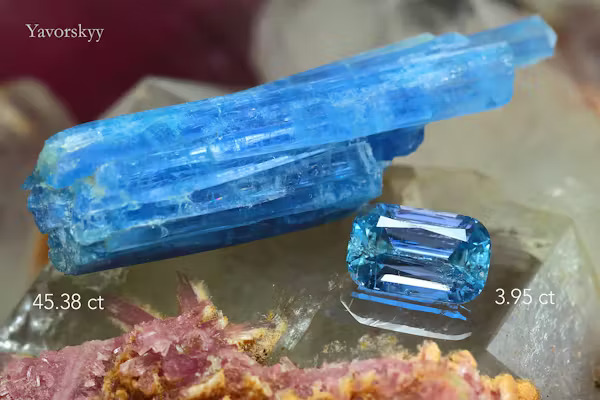
Jeremejevite is a rare and highly sought-after gemstone known for its beautiful colors and unique properties. Found initially in 1883, it continues to fascinate gem enthusiasts and collectors. This article will detail its origins, properties, identification, market value, and uses in jewelry.
- Key Takeaways
- The Origin of Jeremejevite
- Characteristics and Properties
- Global Localities for Jeremejevite
- Identification Tips for Collectors
- Valuation and Market Availability
- Uses in Jewelry
- Care and Maintenance
- Synthetic Jeremejevite
- Enhancements and Treatments
- Noteworthy Specimens
- Summary
1 KEY TAKEAWAYS
- Jeremejevite, first identified in 1883 in Siberia and named after Russian mineralogist Pavel Eremeev, has been found in various global locations and is prized for its unique and beautiful crystal forms.
- This gemstone exhibits a wide range of colors, from colorless to vivid hues like blue, violet, and golden yellow, with a hardness of 6.5 to 7.5 on the Mohs scale, making it suitable for use in jewelry despite its rarity.
- Significant sources of Jeremejevite include Namibia, Myanmar, and Russia, with notable specimens in prestigious collections such as the Smithsonian, and its natural, untreated state enhances its desirability among collectors.
2 THE ORIGIN OF JEREMEJEVITE

3.18 ct Jeremejevite by Yavorskyy
First identified in 1883 on Mt. Soktuj, the colorless crystals of Jeremejevite have since been discovered in various locations globally. Soktuj is located in the Adun-Chilon Mountains of Siberia, Russia. It is a beautiful and picturesque area known for its natural beauty and stunning landscapes. The discovery marked the beginning of this mineral’s fascinating journey through the annals of gemology. Named after Pavel Vladimirovich Eremeev, a distinguished Russian mineralogist and crystallographer, Jeremejevite’s name pays homage to the man whose work laid the foundation for understanding this rare gem.
‘Jeremejev’, the German version of Eremeev’s name, is how the mineral got its current name, linking it to a rich legacy of scientific exploration and discovery. This historical context not only adds to the gemstone’s allure but also underscores the significance of its place in the world of minerals.
3 CHARACTERISTICS AND PROPERTIES
The stunning color range of Jeremejevite adds to its allure. This mineral can be found in hues ranging from:
-
colorless
-
pale yellow
-
blue
-
blue-green
-
lavender
-
greenish
-
light yellow
-
golden yellow
-
violet
Each color variant adds a unique charm, making Jeremejevite a versatile gemstone for collectors and jewelers alike.
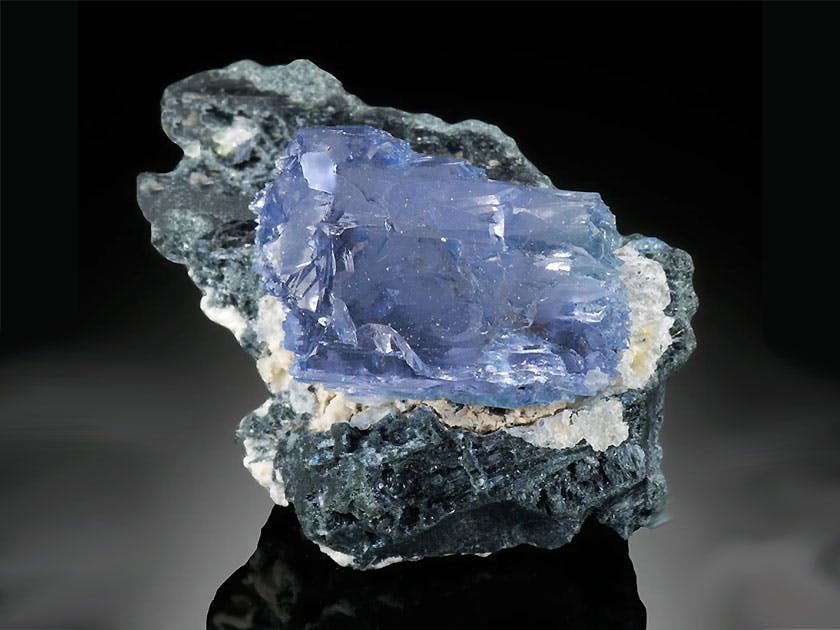
Jeremejevite Crystal by Geology Science
With a hardness of 6.5 to 7.5 on the Mohs scale, Jeremejevite is durable enough for use in jewelry. Hence, it becomes a practical option for those aspiring to include rare and beautiful stones in wearable art pieces. Its refractive index, ranging between 1.639 and 1.648, further enhances its appeal, giving it a brilliant sparkle that catches the eye.
Jeremejevite is characterized by:
-
Its transparent to translucent nature
-
Often exhibiting elongated or hexagonal crystal forms
-
Its uniaxial optical properties
-
Sometimes bicolor zoning
These characteristics add to its visual complexity, making each specimen a unique treasure.
4 GLOBAL LOCALITIES FOR JEREMEJEVITE
Namibia stands out as the most significant source of Jeremejevite, particularly in the Erongo Region. The discovery of blue Jeremejevite crystals in Namibia in 1973, initially mistaken for aquamarine, marked a milestone in the gem’s history and significantly boosted its desirability. These vibrant blue crystals have since become highly sought after by collectors.
In addition to Namibia, Jeremejevite can be found in several other global localities. Notable locations include:
-
Myanmar
-
The Pamir Mountains in Tajikistan
-
Germany
-
Madagascar
-
Mt. Soktuj in Russia
Each of these regions contributes to the diversity and availability of Jeremejevite crystals, adding to the gemstone’s global allure as good crystals.
Smaller quantities of Jeremejevite have also been discovered in Germany and Madagascar, with each find contributing unique characteristics to the gem’s overall profile. The Pamir Mountains of Tajikistan and the Eifel district of Germany are particularly noteworthy for their contributions to the variety of Jeremejevite specimens available to collectors.
5 IDENTIFICATION TIPS FOR COLLECTORS
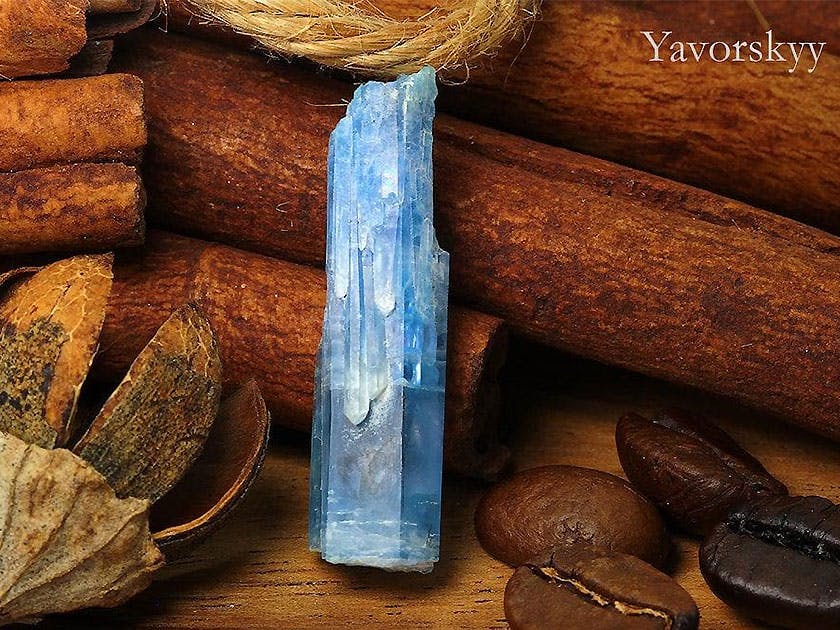
11.04 cts Jeremejevite Crystal by Yavorskyy
For mineral collectors, identifying Jeremejevite can be both a challenge and a delight. One of the primary identification markers is its hexagonal crystal form, typically found in granitic pegmatite. This distinct shape helps differentiate Jeremejevite from other minerals.
Another key characteristic is its bicolor zoning, often displaying light yellowish tones on the top and distinct blue on the bottom. This distinctive coloration can aid collectors in identification. Additionally, Jeremejevite is piezoelectric, meaning it generates electricity when placed under pressure, adding another layer of intrigue to its identification.
Nonetheless, Jeremejevite, with its deep blue crystals, is frequently mistaken for aquamarine. Collectors should be aware of this common confusion and employ careful examination to distinguish between the two, ensuring they correctly identify and value their specimens.
6 VALUATION AND MARKET AVAILABILITY
Jeremejevite’s rarity significantly influences its value. Some characteristics that make Jeremejevite gemstones highly sought after by collectors include:
-
Transparency
-
Intact and well-terminated crystals
-
Strong luster
-
Fine sparkle
-
No inclusions
Cut Jeremejevite gemstones without inclusions are extremely rare and especially prized as a rare mineral.
Recent discoveries, particularly in Namibia, have increased the availability of facetable Jeremejevite material, making it more accessible to the market. However, despite this increased availability, Jeremejevite remains largely unknown among jewelry enthusiasts, with mineral collectors valuing it more than faceted stones.
Faceted Jeremejevite stones from Namibia are typically found in sizes under 1 carat up to about 2 carats, although larger stones have been discovered in recent years. These larger stones, due to their rarity, fetch a premium in the market.
7 USES IN JEWELRY
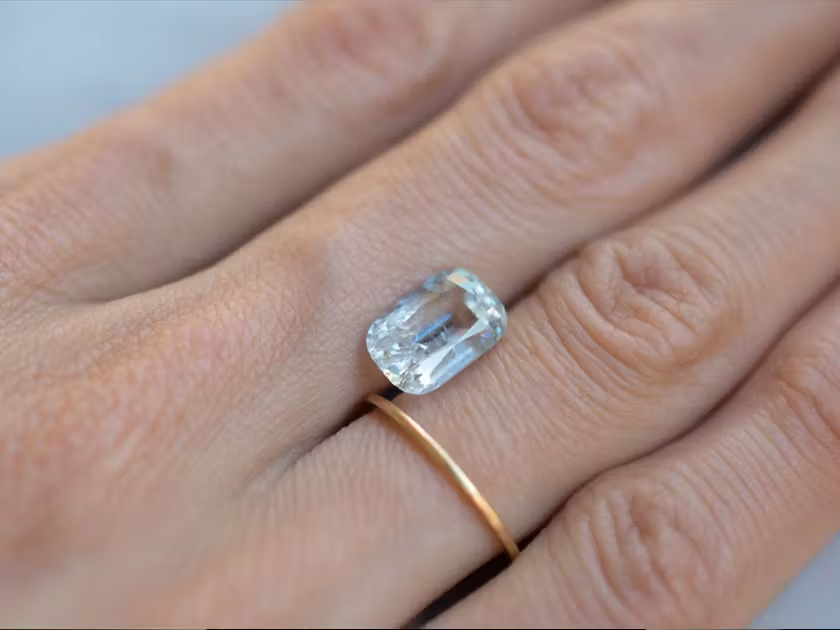
3.072 ct Jeremejevite by Housekidealer
Despite its rarity, Jeremejevite can be faceted into attractive jewelry stones, showcasing a range of colors including:
-
Colorless
-
Light blues
-
Yellow-browns
-
Violet
For those seeking unique jewelry pieces, its distinctive hues and brilliance make it an enticing choice.
Jeremejevite is mostly unknown to jewelry enthusiasts but is highly prized by collectors. Examples of jewelry pieces featuring Jeremejevite include cushion-cut stones and faceted gems from regions like Myanmar and Russia. These pieces are often considered treasures due to their rarity and beauty.
Nonetheless, Jeremejevite jewelry, due to its relative fragility, should be handled with care. Its hardness on the Mohs scale makes it durable, but inclusions within the stone can make it vulnerable to damage if not properly cared for.
8 CARE AND MAINTENANCE
To maintain the longevity of Jeremejevite gemstones, one should avoid using ultrasonic or steam cleaners, which can harm the stone. The inclusions within Jeremejevite can shatter if subjected to mechanical cleaning systems.
Using warm water, a mild detergent, and a soft brush is the recommended cleaning approach for Jeremejevite gemstones. This gentle approach helps maintain the stone’s integrity and keeps it looking its best over time.
9 SYNTHETIC JEREMEJEVITE
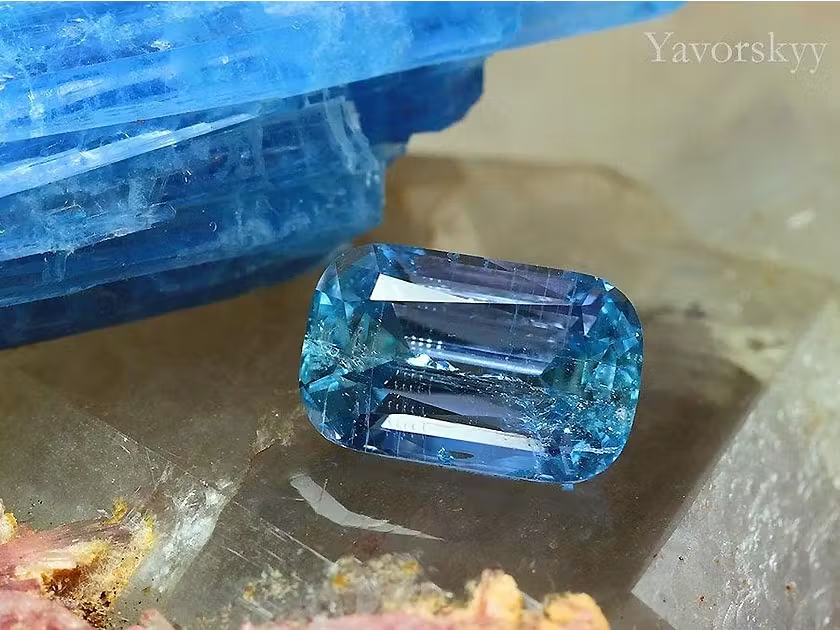
Cleaning Morganite Ring by GemsNYBlog
Synthetic Jeremejevite, created solely for research purposes, has no known applications in jewelry. Scientists have synthesized Jeremejevite in micro-crystalline form to study its properties, including its structure under varying pressures,.
Research on synthetic Jeremejevite includes examining its molecular characteristics using Raman and infrared spectroscopy. Despite these scientific endeavors, synthetic Jeremejevite lacks the natural beauty and authenticity of its natural counterpart and remains confined to research applications.
10 ENHANCEMENTS AND TREATMENTS
Jeremejevite is valued for its natural authenticity, with no known gem treatments or enhancements applied to its gemstones. The absence of enhancements ensures Jeremejevite maintains its natural beauty and integrity, thereby becoming a valuable addition to any collection.
11 NOTEWORTHY SPECIMENS
One of the most remarkable specimens of Jeremejevite is a 106.50 carat faceted gem, cut from a 254-ct rough found in Sri Lanka, marking it as the largest known. This colossal gem stands as a testament to the potential grandeur of Jeremejevite.
In the National Gem Collection, a significant specimen from Madagascar weighs 12.78 carats, making it the largest Jeremejevite in the collection. Another notable specimen is an 11.3-carat oval-cut gem from the Erongo Mountains of Namibia, housed in the Smithsonian National Gem Collection. This gem is celebrated for its large size and rich blue color.
The Yavorskyy collection also boasts impressive faceted Jeremejevite, with the largest specimen weighing over 13 carats. Faceted blue Jeremejevite gems larger than 1 carat are considered impressive in size and are highly treasured by collectors.
12 SUMMARY
Jeremejevite is a gemstone of unparalleled rarity and beauty. From its discovery in Russia to the vibrant crystals found in Namibia, this guide has explored the multifaceted world of Jeremejevite. We have delved into its characteristics, global localities, identification tips, valuation, market availability, uses in jewelry, care, and even synthetic counterparts.
As collectors and enthusiasts, appreciating the natural authenticity and unique properties of Jeremejevite enriches our understanding and enjoyment of this extraordinary gem. May your journey with Jeremejevite be as captivating and rewarding as the gem itself.
